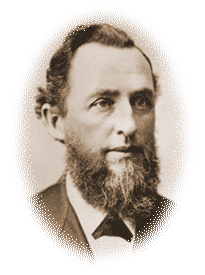 | ||||||
WIKIPEDIA Uriah Smith (May 3, 1832 – March 6, 1903) was a Seventh-day Adventist author and editor who worked for the Review and Herald (now the Adventist Review) for 50 years. "Uriah Smith was a gifted church leader—a teacher, writer, editor, poet, hymn writer, inventor, and engraver. Uriah Smith in 1863, when the General Conference was organized, was elected its first secretary. This was a position that he subsequently held five different times. He was ordained to the gospel ministry in 1874. With the founding of Battle Creek College in 1874, Elder Smith became the Bible teacher, a position he held for the next eight years, the last two of which he was also chairman of the board. Uriah also served as General Conference treasurer from 1876-1877." "Uriah Smith produced many of the first illustrations that appeared in the Review and Herald. He also wrote a number of books, the most famous of which was Thoughts on Daniel and the Revelation better know just as Daniel and the Revelation. In addition, Uriah Smith was an inventor who patented such diverse things as an artificial leg with a moveable ankle and a school desk with an improved folding seat. He died in Battle Creek, Michigan, in 1903, at the age of 71, from a stroke on his way to the Review office." "His book Daniel and the Revelation became the classic text on Adventist end-time beliefs." "His sister Annie R. Smith was an early Seventh-day Adventist hymnist.".  "Uriah Smith was born in 1832 in West Wilton, New Hampshire. His family accepted the Millerite message and in 1844 experienced what has become known as the Great Disappointment. That same year, Smith had his left leg amputated due to an infection. Following the Disappointment, Smith lost interest in religion and commenced schooling at Philips Exeter Academy in Exeter, New Hampshire. In December 1852, he accepted the message taught by Sabbatarian Adventists which in 1863 became the Seventh-day Adventist Church. In 1853, he began working at the offices of the Advent Review and Sabbath Herald (now the Adventist Review), becoming its editor in 1855. His main contribution to Adventist theology was a commentary on the prophetic Biblical books of Daniel and the Revelation, but he also wrote extensively on conditional immortality and other topics. He advocated religious liberty, the abolition of slavery, and noncombatancy for Adventists. Publications
| ||||||
Much as such Adventist "pioneers" as Hiram Edson, Captain Joseph Bates, and the Uriah Smith might have had their own personal reservations about where Ellen White was getting her visions from, without the SUPPORT these visions gave their own ideas and beliefs, a lot fewer people would have paid any attention to these ideas and beliefs. Once Ellen White had received visions on the subjects of "Jesus as Our High Priest," the Seventh-day Sabbath as the only valid day of worship, "Health Reform", the abolition of slavery, temperance, non-smoking, non-combatancy, and Vegetarianism, the vast majority of Seventh-day Adventists were inclined to believe that God Himself had stamped these ideas and doctrines with His Divine approval -- and they could no more be changed and improved upon than could the words and ideas of the Holy Bible. In this way, and by this means, the ideas and theories of Edson, Bates, and Uriah Smith became, in practice if not in theory, IMMORTAL, UNCHANGEABLE, and INFALLIBLE.. Meanwhile, in Catholicism, a French teen-ager named Bernadette Soubirois was performing a similar service for the Popes of the Roman Church. An apparition they assumed was the Virgin Mary had referred to itself as the "Immaculate Conception" and made of the pope who wished this to be an accepted Catholic dogma -- INFALLIBLE! By the year 1870 it was official!
INFALLIBILITY restated for Seventh-day Adventists! CLICK HERE | ||||||